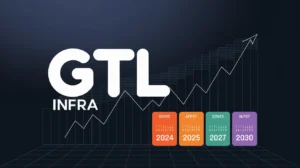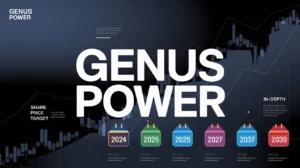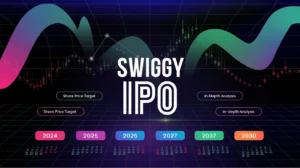- Introduction
- Company Profile
- Tata Motors: A Global Automotive Leader
- Share Price Target Projections
- Historical Performance
- Tata Motors Ltd. Share Analysis
- Tata Motors Ltd. Strengths & Weaknesses
- FAQs
- What factors influence Tata Motors' share price?
- What is the predicted share price of Tata Motors in 2024?
- What is the predicted share price of Tata Motors in 2025?
- What is the predicted share price of Tata Motors in 2030?
- What is the predicted share price of Tata Motors in 2040?
- What is the predicted share price of Tata Motors in 2050?
- Conclusion
Introduction

Tata Motors, a cornerstone of the Tata Group, stands as a global powerhouse in the automotive industry. With a rich history and a forward-looking approach, Tata Motors continues to lead with innovation and reliability. This article delves into the future Tata Motors Share Price Target 2024, 2025, 2030, 2040 and 2050, based on technical and fundamental analyses.
Company Profile
| Company | Tata Motors Ltd. |
| Company Type | Public |
| Traded As | BSE: 500570, NSE: TATAMOTORS, NSE NIFTY 50 Constituent |
| ISIN | IN9155A01020 |
| Industry | Automotive |
| Founded | 1945 (79 years ago) |
| Founder | Jehangir Ratanji Dadabhoy Tata |
| Headquarters | Mumbai, Maharashtra, India |
| Area Served | Worldwide |
| Key People | Natarajan Chandrasekaran (Chairman), Gunter Butschek (CEO), Martin Uhlarik (CDO) |
| Products | Automobiles, Luxury vehicles, Commercial vehicles, Automotive parts, Pickup trucks, SUVs |
| Production Output | 1.1 Million (approx) (2021) |
| Services | Automotive finance, Vehicle leasing, Vehicle service |
| Revenue | ₹350,600.15 crore (US$44 billion) (2023) |
| Operating Income | ₹7,059.30 crore (US$880 million) (2023) |
| Net Income | ₹2,414.30 crore (US$300 million) (2023) |
| Total Assets | ₹336,081.38 crore (US$42 billion) (2023) |
| Total Equity | ₹45,321.80 crore (US$5.7 billion) (2023) |
| Number of Employees | ~81,811+ (2023) |
| Parent | Tata Group |
| Subsidiaries | Tata Motors Cars, Jaguar Land Rover, Tata Daewoo, Tata Marcopolo, Tata Technologies, Tata Hispano, Tata Hitachi Construction Machinery |
| Website | tatamotors.com |
Tata Motors: A Global Automotive Leader
Tata Motors is a multinational automotive manufacturer headquartered in Mumbai, India. It specializes in producing a wide range of vehicles, including:
- Cars: Sedans, SUVs, and hatchbacks.
- Trucks: Commercial vehicles of various sizes and capacities.
- Vans: Passenger and cargo vans.
- Buses: Public transportation, school transportation, and other purposes.
Key Facts About Tata Motors:
- Subsidiaries: Includes Jaguar Land Rover and Tata Daewoo.
- Joint Ventures: Partnerships with companies like Hitachi and Stellantis.
- Manufacturing Plants: Located in India, Argentina, South Africa, UK, and Thailand.
- Research & Development Centers: India, South Korea, UK, and Spain.
- Market Presence: Listed on BSE, NSE, and NYSE.
- Global Ranking: Ranked 265th on the Fortune Global 500 list in 2019.
Share Price Target Projections
Here’s a detailed prediction for Tata Motors’ share price targets from 2024 to 2050. These projections are based on technical and fundamental analysis of the company’s historical performance and expected future trends.
Tata Motors Share Price Target 2024
| Year | Target Range (₹) | Supporting Factors | Challenges |
| 2024 | ₹1,050 – ₹1,450 | Continued upward trend, healthy financial performance, potential EV market growth, positive analyst opinions | Rising input costs, economic slowdown, intense competition |
Tata Motors Share Price Target 2025
| Year | Target Range (₹) | Supporting Factors | Challenges |
| 2025 | ₹1,500 – ₹2,500 | Continued EV adoption, government support for EVs, potential new model launches, global expansion, improved operating efficiency | Volatility in global markets, semiconductor chip shortage, rising interest rates |
Tata Motors Share Price Target 2030
| Year | Target Range (₹) | Supporting Factors | Challenges |
| 2030 | ₹3,000 – ₹4,500 | Strong presence in the Indian EV market, potential leadership in connected car technology, successful global expansion, brand consolidation | Intense competition from established automakers and new EV players, technological disruptions, regulatory changes |
Tata Motors Share Price Target 2040
| Year | Target Range (₹) | Supporting Factors | Challenges |
| 2040 | ₹8,000 – ₹12,000 | Continued global dominance in the EV market, advancements in autonomous driving technology, integration of sustainable practices | Unforeseen technological advancements, drastic shifts in consumer preferences, geopolitical or environmental uncertainties |
Tata Motors Share Price Target 2050
| Year | Target Range (₹) | Supporting Factors | Challenges |
| 2050 | ₹18,000 – ₹25,000 | Global dominance in the EV market, successful adoption of autonomous driving technology, integration of sustainable practices across the entire value chain | Unforeseen technological advancements, drastic shifts in consumer preferences, geopolitical or environmental uncertainties |
Tata Motors Ltd. Fundamentals
| Metric | Value |
| Market Cap | ₹3,07,961.47 Cr. |
| Enterprise Value | ₹3,25,419.26 Cr. |
| No. of Shares | 332.28 Cr. |
| P/E | 36.35 |
| P/B | 11.15 |
| Face Value | ₹2 |
| Div. Yield | 0.23% |
| Book Value (TTM) | ₹83.10 |
| Cash | ₹1,414.65 Cr. |
| Debt | ₹18,872.44 Cr. |
| Promoter Holding | 46.37% |
| EPS (TTM) | ₹25.49 |
| Sales Growth | 39.13% |
| ROE | 12.90% |
| ROCE | 7.81% |
| Profit Growth | 256.86% |
Historical Performance
Analyzing the historical performance of Tata Motors provides valuable insights into its future potential.
| Year | Tata Motors (₹) | YOY Change (%) | High (↑) – Low (↓) Range (₹) |
| 2011 | ₹176.51 | -31.80% | ↑ ₹264, ↓ ₹136 |
| 2012 | ₹309.09 | 75.10% | ↑ ₹317, ↓ ₹176 |
| 2013 | ₹372.42 | 20.40% | ↑ ₹400, ↓ ₹249 |
| 2014 | ₹490.85 | 31.80% | ↑ ₹544, ↓ ₹327 |
| 2015 | ₹391.25 | -20.30% | ↑ ₹605, ↓ ₹279 |
| 2016 | ₹471.35 | 20.40% | ↑ ₹598, ↓ ₹266 |
| 2017 | ₹431.20 | -8.60% | ↑ ₹553, ↓ ₹357 |
| 2018 | ₹172.60 | -60% | ↑ ₹443, ↓ ₹154 |
| 2019 | ₹185.10 | 7.20% | ↑ ₹239, ↓ ₹106 |
| 2020 | ₹183.70 | -0.80% | ↑ ₹201, ↓ ₹63.60 |
| 2021 | ₹482.35 | 162.50% | ↑ ₹536, ↓ ₹184 |
| 2022 | ₹388.10 | -19.60% | ↑ ₹528, ↓ ₹366 |
| 2023 | ₹779.95 | 100.90% | ↑ ₹802, ↓ ₹381 |
| 2024 | ₹878.75 | 12.60% | ↑ ₹900, ↓ ₹776 |
Tata Motors Ltd. Profit & Loss
| Particulars | MAR 2021 (In Cr.) | MAR 2022 (In Cr.) | MAR 2023 (In Cr.) |
| Net Sales | 30,175.03 | 47,263.68 | 65,757.33 |
| Total Expenditure | 28,741.31 | 45,764.75 | 61,226.28 |
| Operating Profit | 1,433.72 | 1,498.93 | 4,531.05 |
| Other Income | 440.64 | 659.91 | 820.94 |
| Interest | 2,110.83 | 2,121.73 | 2,047.51 |
| Depreciation | 1,730.70 | 1,760.57 | 1,766.86 |
| Exceptional Items | -307.55 | 83.41 | -282.82 |
| Profit Before Tax | -2,274.72 | -1,640.05 | 1,254.80 |
| Tax | 20.72 | 99.18 | -1,473.33 |
| Net Profit | -2,395.44 | -1,390.86 | 2,728.13 |
| Adjusted EPS (Rs.) | -6 | -4.54 | 7.12 |
Tata Motors Ltd. Share Analysis
Exploring the Indian auto industry, which ranks among the top 5 globally, reveals significant insights into Tata Motors’ stock performance. With robust government support and promising export growth, Tata Motors is well-positioned for the future.
Sales Growth
Tata Motors has demonstrated impressive sales growth, recording a 39.13% increase in net sales, reaching ₹65,757.33 crore in 2023. This surge underscores the company’s resilience and capacity to capitalize on market opportunities despite economic challenges.
Profit Growth
The company reported a remarkable profit growth of 256.86%, amounting to ₹2,728.13 crore in 2023. This substantial increase in profitability reflects strong operational efficiency and strategic initiatives aimed at cost management and revenue enhancement.
Operating Profit
For the latest quarter, Tata Motors reported an operating profit of ₹1,975.48 crore, highlighting its robust operational performance. The company’s focus on optimizing its operations and enhancing productivity has been pivotal in achieving these results.
Financial Metrics
Tata Motors’ average Return on Equity (ROE) stands at 12.90%, indicating efficient utilization of shareholders’ equity. The company also maintains a low Debt to Equity ratio of 0.84, demonstrating prudent financial management and a strong balance sheet.
Dividend Policy
Tata Motors has declared a dividend of ₹2 per share, reflecting its commitment to rewarding shareholders. Although the dividend yield is modest at 0.21%, it underscores the company’s intent to share profits with its investors.
Promoter Holding
Promoter shareholding in Tata Motors stands at 46.37%, with no pledging of shares. This significant stake by promoters indicates confidence in the company’s future prospects and aligns their interests with those of other shareholders.
Valuation Metrics
- PE Multiple: Tata Motors trades at a Price to Earnings (PE) multiple of 36.32, compared to its 5-year average of 17.67. This higher PE ratio indicates strong market sentiment and expectations of future growth.
- Book Value: The company’s Book Value (TTM) is ₹83.10, providing a basis for evaluating its intrinsic worth.
- Face Value: The face value of Tata Motors’ shares is ₹2, which is a nominal measure used for accounting purposes.
Tata Motors Ltd. Strengths & Weaknesses
Strengths
- Profit Growth: Tata Motors has demonstrated a robust profit growth of 33.41% over the last three years, reflecting its ability to generate higher earnings.
- PEG Ratio: The company boasts an impressive Price to Earnings Growth (PEG) ratio of 0.14, indicating that its stock is undervalued relative to its growth potential.
- Cash Conversion Cycle: Tata Motors maintains an efficient cash conversion cycle of -18.14 days, highlighting its capability to quickly convert its investments in inventory into cash flows from sales.
- Operating Leverage: The company has a strong degree of operating leverage, with an average of 6.28, signifying that a large proportion of its costs are fixed, which can amplify profits as sales increase.
Weaknesses
- Revenue Growth: The company’s revenue growth has been lackluster at 14.39% over the past three years, indicating a need for strategic initiatives to boost top-line growth.
- Return Metrics: Tata Motors has reported a poor ROE of -2.87% and Return on Capital Employed (ROCE) of 2.86% over the same period, reflecting challenges in generating returns on investments.
- Tax Rate: The company has an unfavorable tax rate of -117.42%, which can impact its net profitability.
- PE Ratio: Trading at a high PE of 36.35, Tata Motors may be considered overvalued, indicating potential market risks if growth expectations are not met.
Also Read: IRCTC Share Price Target 2024, 2025, 2026, 2030, 2040, 2050
FAQs
Conclusion
Tata Motors, with its diversified product portfolio and global presence, is well-positioned to capitalize on the growing automotive market, particularly in the electric vehicle (EV) segment. The company’s robust financial performance, strategic partnerships, and focus on innovation are key drivers of its future growth. However, it must address challenges such as rising input costs, competition, and technological disruptions to sustain its upward trajectory. Investors should consider these factors when evaluating Tata Motors’ stock for long-term investment.
Disclaimer – We are not SEBI-registered advisors. A financial market is always risky to anyone. This website is only for training and educational purposes. So before investing, we are requested to discuss certified expertise. We will not be responsible for anyone’s profit or loss.








